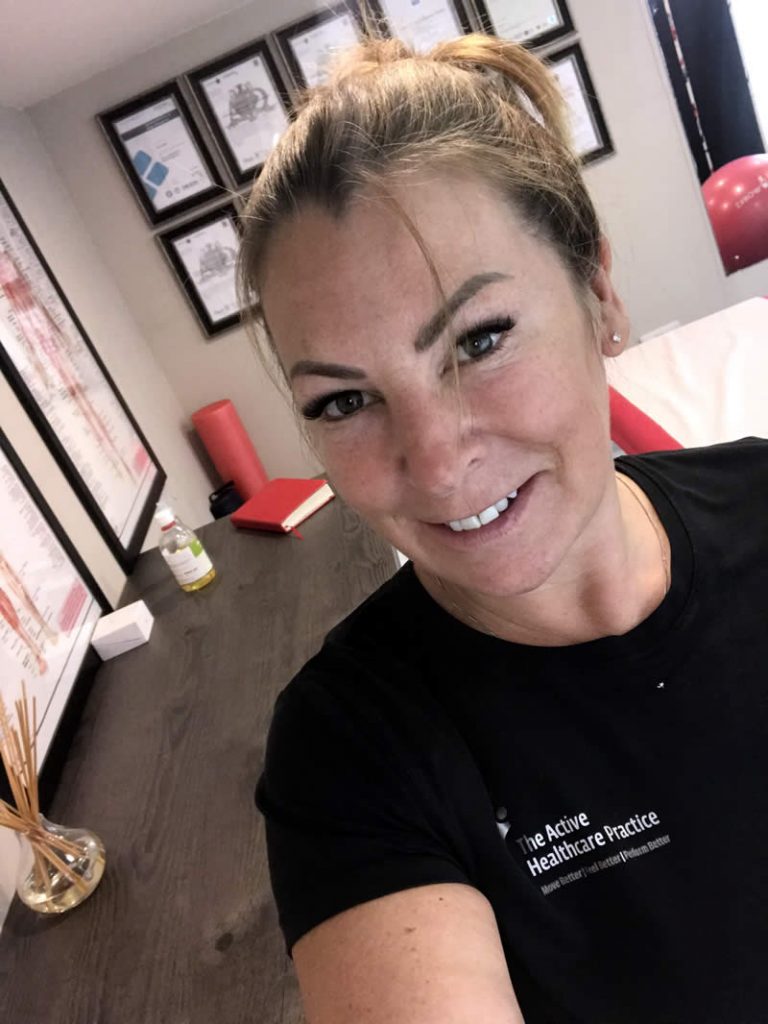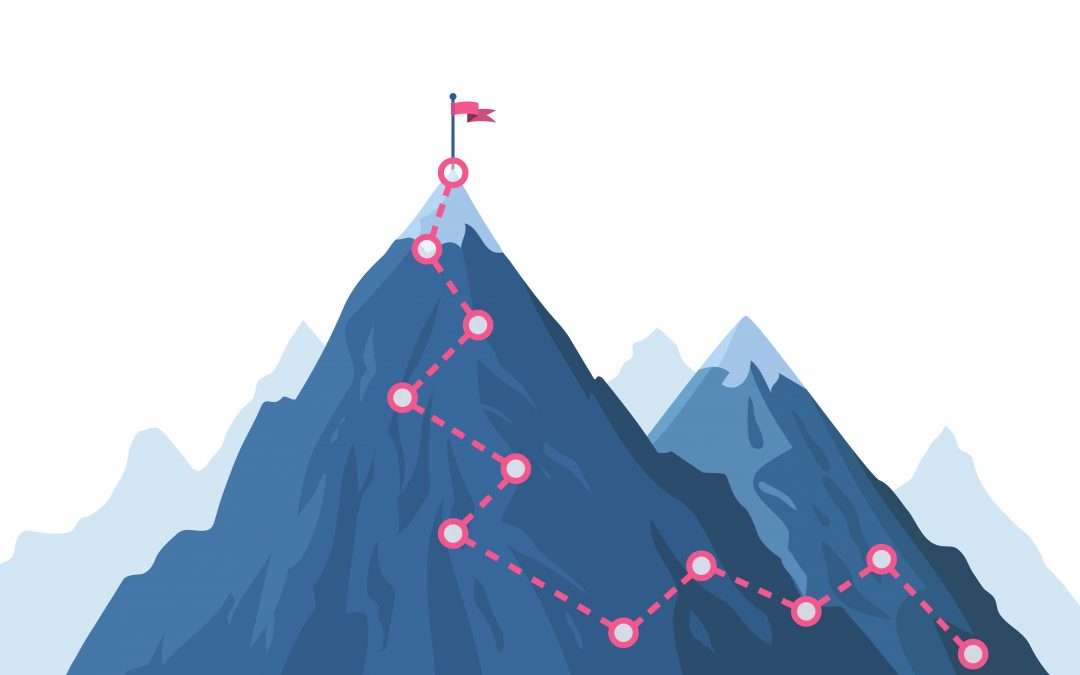Happy New Year!
If that seems a little late, there’s a reason behind me purposely uploading my New Year message until late January! If you’re intrigued to find out why, read on…
The worst week of the year?
This week is officially the ‘worst’ week of the year, according to scientists, who’ve worked out a formula, taking into consideration; weather, time since Christmas, debt, monthly salary, low motivational levels and a feeling of needing to take action.
I can’t do much about the first 3 but I can help with the latter two with one simple hack!
New Year: a kickstart to our health and fitness?
Many of us use the New Year as a reason to kickstart our health and fitness, it’s like we’ve been given a clean slate and we go full steam ahead with a new exercise regime and diets, but week 3 of January is often a point where we lose our resolve, get injured OR find ourselves laden with guilt that we haven’t even started our New Year’s Resolutions! (ok, maybe that’s just me?)
Week 3 of January is the start of my busiest time of the year! It’s when many New Year’s fitness resolutions have ended up in injury and this is the advice that I give to my clients to soar through their recovery and get back on track.
So, you’ve started the year with a resolution that this year is going to be the year that you get back to being 100% or ’the old you’ and you’re struggling to uphold that promise to yourself.

Change your resolution to a PLAN
Try this one simple mind hack – change the word resolution for PLAN.
’This is my New Year’s PLAN’.
OK, so just by changing that one word, it makes us think that we’re going to need some more tools to help us along our journey. Oh yes, our journey! Where exactly are we going??? What is your GOAL?
What is your goal?
Did you promise yourself this year that this was going to be the year that you ‘get back to being 100%’ or ‘the old you’? Your plan needs a goal. Without a goal, we have no vision for where we are going and we need to have a visible destination and a road map (the plan) for how to get there.
For your plan to work and be successful, it needs to be broken down and contain essential elements. We call it SMART goal planning and it works for pretty much everything; fitness, recovering from injury, diet, time management, if there’s something that you want to change. SMART goal planning is the way to do it. Here’s how it works:
Making your goals SMART
SMART is an acronym for Specific, Measurable, Achievable, Realistic and Timely.
SPECIFIC
A goal needs to be specific, your plan to get back to the old you this year or get back to being 100% is too vague. How will you know what you are working towards? Get specific. “I will be able to run five miles pain-free by April 1st” or “I will lose 2 stone by December 31st”
MEASURABLE
A goal needs to be measurable so that you can track your progress and document your success. (and celebrate those successes along the journey. Everyone needs something to celebrate, right?)
You can measure by setting targets along the way, such as being able to run 100m pain free, or being able to measure weight loss by tracking it weekly. For goals in physical recovery that we see in clinic, we’d change a vague goal of ‘I want my shoulder to feel better’ to a more specific target of restoring normal range of movement and we’d measure this. It’s important to set a benchmark that you can track.
ACHIEVABLE
Your goal has got to be achievable. “I want to run a marathon in 8 weeks time” when you’ve never run before is not an achievable goal. A goal like that is a guarantee of failure, which leads to misery, or worse still, ending up on my couch in a whole world of pain. Instead, set a goal like “I want to run a marathon this year and in 8 weeks time I will be able to run 5k” You could then reset your next achievable target along your plan to your ultimate goal of running your marathon.
HOW your plan is going to be achievable also needs to go in here. Who’s going to to help you achieve it? Do you need to enlist the moral or practical support of your family, or get an exercise buddy, or book in for treatment to help you manage an injury?
REALISTIC (AND RELEVANT)
Oh, we all love a dream, but without nailing this part of the plan, your goal is going to remain just that! It absolutely HAS to be realistic to work AND is relevant to your values and contributes towards your broader objectives. Here’s where you need to carefully consider your other commitments, work schedule, family and the time available. It’s great to get family on board with your goals, but balance is key. Focus on goals that are realistic and relevant for your current life. If it’s just not going to fit in, don’t throw in the towel, adjust your goal to what IS realistic. Maybe you can’t get out of the house to go for a run because you’re on your own homeschooling, but could you join an online bootcamp with recorded classes that fit into your time schedule?
TIMELY
Your plan needs a time frame to keep you motivated to take action. You can chop big goals up into smaller ones so that you’re always monitoring your progress. Slice long term goals up into monthly or weekly smaller ones – you can make a SMART goal for each week or each month for longer plans.
Need help?
If you’ve got an injury which you feel is holding you back, or you would like help in making a health & fitness SMART goal, get in touch. I can help you get there!
If you’d like to receive my FREE SMART GOAL TEMPLATE and sign up to receive my newsletter, click the link below
THIS IS YOUR YEAR! Go!
Julia Cuttelle Parker

About the author:
Julia is a Sports Therapist with a vast knowledge of treating musculoskeletal injury, but is also a qualified Personal Trainer with advanced qualifications in GP Exercise referral for clients with medical conditions and Level 4 qualifications for working with clients with Lower Back Pain, Diabetes and Obesity.
In addition to working in Clinic in Lytchett Matravers, Julia teaches online stretch classes and leads the Stretch & Recovery classes in Lynsey Suzanne Fitness’ online FOCUS IN FIVE Programme.
Lower back pain is extremely common. Roughly half the UK adult population will suffer with low back pain for at least 24hours at some point over the course of a year, and 4 out of 5 adults will suffer with back pain during their lives.
It might be common, but let’s not be dismissive about back pain. IT HURTS, and that kind of pain can make you worry that something is seriously wrong! At its worst it can really take your breath away and be completely debilitating. At best it can stop you doing things you love, interfere with work and daily activities.
In over 95% of cases, back pain will be ‘non specific’. That means that there is no specific identifiable underlying cause. The really good news is that less than 1% of back pain has a serious underlying cause.
Whilst serious back problems are very rare, always call your GP or NHS 111 if you have:
- sciatica on both sides
- weakness or numbness in both legs that is severe or getting worse
- numbness around or under your genitals, or around your anus (saddle paresthesia)
- finding it hard to start peeing, can’t pee or can’t control when you pee – and this isn’t normal for you
- you don’t notice when you need to poo or can’t control when you poo – and this isn’t normal for you. These can be signs of a rare but serious condition called Cauda Equina which needs emergency medical attention.

It’s not always easy (or necessary) to pinpoint a specific cause of the pain
With Non-Specific back pain, we don’t really know where it comes from. Or rather there are so many potential contributing factors that it can be difficult to single out a particular cause. It usually clears up by itself within a few days or weeks. In a small percentage of cases, it can become persistent, or chronic.
Whilst it’s not always easy to pinpoint a specific cause of the pain, understanding contributing factors can have a big impact on your recovery. Knowledge is power when it comes to your ability to manage the pain, so that you can get back to doing the things that you love as quickly as possible.
Give your clinician as much information as possible
When you consult a clinician, for example, your GP, or a Sports Therapist like myself, or Chiropractor, Osteopath or Physiotherapist about your back pain, we’ll always take a detailed history and diagnostic assessment to rule out serious underlying causes. The information you give us is key to finding out possible causes. It also helps us when working out a plan of action to get you better, so don’t skimp on the info and be honest with your answers.
We might organise specific tests including X-rays and scans, but usually we won’t send you for a scan as a matter of routine, because it can very often be counter productive!
Spines often look worse than they are!
Many people with no pain have all kinds of things “wrong” with their backs on imaging. Most of us have crooked bits, extra bits, or ‘missing’ bits that aren’t actually causing any problems! X-ray and MRI findings can invoke fear, because most spinal imaging will show up some kind of irregularity that isn’t actually causing any pain. We also know that at least half of ‘slipped’ or discs return to ‘normal’. And it’s actually the worst ones that are the most likely to resolve on their own.

How your Clinician explains your condition can have a huge impact on your recovery
Language is powerful. Clinicians have, in the past, been guilty of using catastrophising language such as ‘degenerative disease’, which can be very unhelpful. That kind of language can lead you to thinking that things are going to get worse. It might be more helpful to describe these kind of changes as ‘age related’, just like grey hairs and wrinkles. It doesn’t necessarily mean that you’re on the fast track to the scrap heap! We used to use the word ‘Chronic’ to describe pain lasting over 12 weeks. But Chronic sounds like it’s always going to be like that, which isn’t necessarily the case, so now we tend to use ‘persistent’.
Discs don’t slip
Describing discs as ‘slipped’ is also something that we’re trying to move away from as the discs don’t actually slip out of place. It can lead people to imagining that their spines are fragile and a bit like a game of Jenga! They’re not! Your spinal structures are incredibly strong and designed to withstand massive forces. We’ve agreed that it hurts, it really hurts, and it can be frightening. But downgrading fear can be the first important step on the road to recovery. Try not to conjure up mental imagery about your back being out of alignment or that your bones have moved, because that is very unlikely to be the case.
It’s likely that your back pain is due to a number of factors and not one cause
There are a vast array of possible causes of back pain and there is no all encompassing magic cure or magic therapist! It might be due to unhappy tissue, joint irritations, disc related, muscle strains or tightness but could also be due to dehydration, stress, lack of sleep, mood, hormones and a whole host of other things completely unrelated to unhappy tissue. It’s very rarely ever one thing, and it’s not really possible (or necessary) to pinpoint the exact cause, once we’ve ruled out serious conditions. Sometimes you’ll hear that a particular therapist ‘cured’ someone’s back pain. Generally, we’ll make you feel better, but it’s very unlikely that what we do ‘cures’ the cause, but sometimes we get lucky and we’re always delighted to take the credit!

You CAN gain control over your back pain, you don’t have to suffer!
Let’s just back up a bit. I said that there’s no magic cure, but there are sensible approaches to help you manage back pain and gain control over problem areas so that get you back to doing what you love!
Speaking from personal experience
Prior to becoming a Sports Therapist, I had a disc injury which completely stopped me in my tracks. Even walking was difficult for a while. I was afraid of the pain and afraid that I was causing damage by moving. The advice I was given and prognosis for getting back to my ‘normal’ wasn’t great. At the time, I blamed it on my Cross Fit routine and doing too many burpees. My GP suggested I should only take part in gentle exercise in future and shouldn’t continue doing what I enjoyed. An MRI scan showed a prolapsed disc, and I was given a diagnosis of degenerative disc disease with Modic changes (inflammation in the vertebrae). I thought that pain and disability was something that I would just have to put up with and spent a lot of time avoiding things ‘because of my back’ and became very sedentary and very depressed.
You don’t need to spend thousands of pounds on physical therapy treatments to get better
With very little advice other than to take pain killing medication, I spent thousands of pounds (money that I couldn’t afford) over a couple of years on physical therapy. At one point, treatments were costing me more than my mortgage, and I wasn’t getting any better. I assumed that I just hadn’t found the right therapist and kept trying different people and different treatments. Some really helped but nothing lasted, the pain kept coming back. It wasn’t that any one therapist wasn’t doing a good job, but I hadn’t realised how important it was to put in some homework too (and do those exercises that they gave me!) or how likely it was that it was my lifestyle outside of my fitness regime which had contributed to my back pain!
I’ve now learned how to manage my condition and I can honestly say that I no longer consider myself to have a back problem! I hope that you’ll find some of these tips helpful in your recovery.

Your spine is strong! It might not be perfect, but It’s designed to withstand massive loads and forces, you’re not fragile!
Firstly, keep moving! You are not going to cause ‘damage’. Skeletal movement provides the joints and soft tissues with nutrients, vital in the healing process. You may need to rest, but that doesn’t mean not moving! Sometimes muscle spasms can cause severe, frightening pain and just getting moving can help those muscles to relax.
That’s easier said than done when you’re in pain, so you may need help to get you moving in the first place. There’s lots that we can do in clinic to help during the acute stages, with treatments such as acupuncture, massage and mobilising the joints. Hands on therapy is also helpful if your problem is persistent (chronic), but I can’t emphasise enough that 80% of your recovery will be the effort that you put in at home.

Eat, drink, sleep!
Checking your hydration and nutrition is vitally important. Our bodies are over 60% water. Discs are around 85% water. So if you’re not drinking enough water, your whole system is really going to be running dry. You need around 2.5 -3.5 litres of water a day. Some of that can be made up from tea and coffee and fruit juice etc, but caffeine is also a diuretic so that needs to be taken into account.
Some foods and drinks can raise inflammation in the body, so keeping a check on sugars, alcohol, refined carbohydrates and processed foods will help.
Sleep quality is also vital. Our bodies repair when we sleep. Make sure you’re getting enough.
Movement is key to a healthy back! Motion is lotion!
Strengthening weak muscles will hugely improve back pain. Our muscles can lose strength and become stiff and tight from extended periods of sitting. We often don’t realise how much time we spend sat down, at our desks, in the car, on our sofas. Then we underestimate the demands that we place on an otherwise sedentary body. We’ll be sat down all day (or have got straight out of bed in the morning) and then throw ourselves into intensive exercise at the gym for an hour, only then to return to sitting. Or perhaps decide to spend a full day gardening, before heading back to the sofa again! Exercise and strengthening should always follow a pattern of what you enjoy doing for you to be able to stick to it and it needs to be progressive, starting small to build a firm foundation, and building strength up. I’m a specialist in physical activity and lifestyle strategies for managing back pain, so I can help you with this if you need a plan!
Stretch to stay flexible
Remember to stretch! Our friends in the animal kingdom do it as a matter of routine, but often it’s that part of exercise that we skip, because we don’t have time, or it’s a bit boring. Try to build a quick daily stretch routine into your life, a bit like brushing your teeth, to keep joints flexible and muscles supple. At ActiveHCP, I run online stretch classes which you can join, or you can follow some of my stretch routines on my youtube channel.
Treatments do help
Get a massage treatment. I started my career in Sports Therapy initially by training in Sports Massage because it by far stood out as the most helpful hands on therapy for managing my back pain. Massage also helps to lower inflammation in the body, raises pain killing endorphins and keeps tissue supple.
Don’t put up with pain. I offer free 15 minute video or telephone consultations, so if you’d like to talk to me about your back pain problem, do get in touch!

About the author :
Julia is a Sports Therapist with a vast knowledge of treating musculoskeletal injury, but is also a qualified Personal Trainer with advanced qualifications in GP Exercise referral for clients with medical conditions and Level 4 qualifications for working with clients with Lower Back Pain, Diabetes and Obesity.
In addition to working in Clinic in Lytchett Matravers, Julia teaches online stretch classes and is an Expert Panelist on the Clubhouse Media app’s ‘Honest Health’ room.


Recent Comments